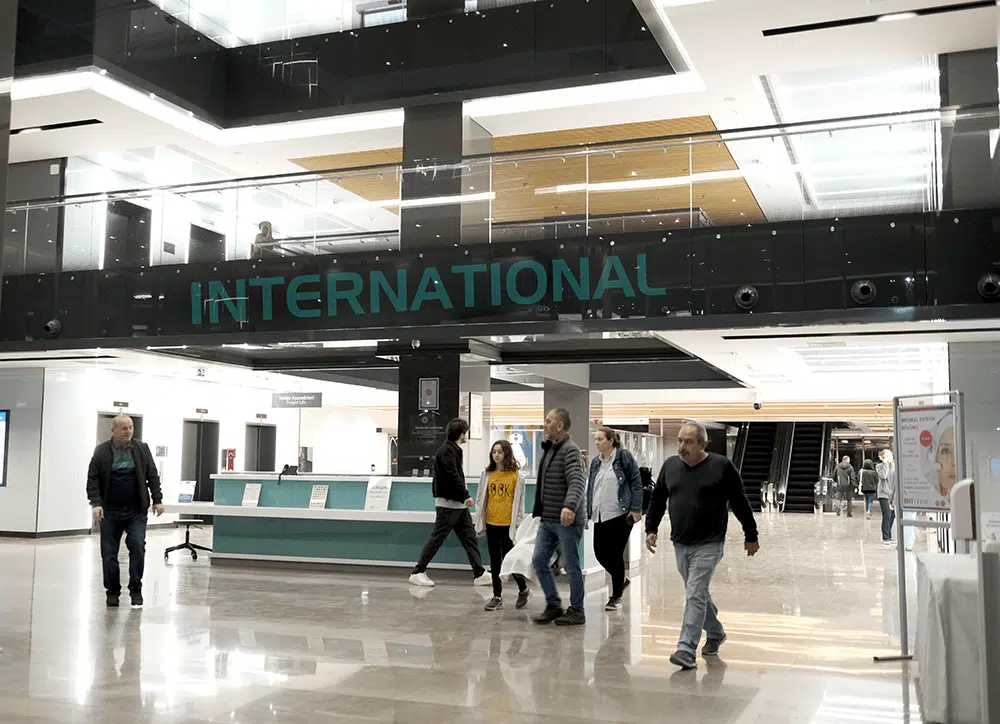As you begin to research surgical rhinoplasty, one of the most perplexing dilemmas that you may encounter is deciding between open vs closed rhinoplasty. However, deciding between open and closed rhinoplasty is just one aspect of the overall surgical procedure.
Indeed, the most critical element to achieve a successful outcome is the surgeon’s level of expertise and proficiency. While the techniques may differ, the surgeon’s ability to understand and address the patient’s specific needs and goals is what ultimately leads to a satisfactory result.
However, according to a recent study, both techniques demonstrated a similar level of satisfaction among patients and providers, and not much difference has been found in terms of advantages between the two techniques.
Open vs Closed Rhinoplasty: Definitions

Clearly, the difference between the two types of rhinoplasty in Turkey starts with the definition of each one. Below are brief definitions of both open and closed rhinoplasty:
Open Rhinoplasty
Open rhinoplasty involves making an incision across the columella, which is the soft tissue between the nostrils. This technique can provide better access to the internal structure of the nose, allowing for more precise and controlled manipulation of the nasal cartilage and bone.
With the help of open rhinoplasty, surgeons can more effectively address the underlying structural issues and achieve a more aesthetically pleasing outcome. Moreover, open rhinoplasty may be helpful in revision rhinoplasty, where the nose has already undergone surgery and requires further modifications.
In other words, this approach allows the doctor to lift the skin up from the nose, providing a direct view of the nose’s internal structure. It’s a suitable option for most patients who are good candidates for surgical rhinoplasty, especially those who require more intense corrections. Patients who have had a broken nose are also more likely to require open rhinoplasty.
Closed Rhinoplasty
Closed rhinoplasty, also known as endonasal rhinoplasty, is a surgical technique that is carried out entirely within the nostrils of the patient, making it a scarless procedure that ensures no visible scars on the outer surface of the nose. Surgeons rely on this technique to make minor corrections and reshape the nose.
This technique provides access to the nasal cartilage and bone structure via hidden incisions, which allows for precise modifications to be made to the nose’s shape and structure. The incisions made in closed rhinoplasty are typically very small and are made entirely inside the nose, which also results in less postoperative bruising and swelling.
Therefore, closed rhinoplasty is less invasive compared to other methods, leading to reduced healing time and less swelling after the procedure. The incisions made during this procedure are made within the nostrils, making it virtually scarless. As a result, it is commonly used to treat patients who require only minor alterations, particularly to the nasal tip.
During a closed rhinoplasty procedure, the surgeon makes incisions inside the nose and then works on the cartilage framework from there. However, this technique is considered advanced and requires a high level of skill. Even surgeons who were trained more than 20 years ago may not be experienced enough to perform this technique.
Open vs Closed Rhinoplasty: Differences

When considering rhinoplasty, it’s important to understand the differences between closed and open procedures. Regardless of type, rhinoplasty procedures seem to improve the quality of life of patients according to a recent study. In any case, below are the main differences in terms of complexity, incisions, and other aspects:
- Complexity: Closed rhinoplasty is a more difficult and complex procedure as the surgeon operates from inside of your nostrils instead of using a small incision like in open rhinoplasty.
- Operation time: Your surgeon needs more time to complete the open rhinoplasty. In contrast, the operation time for closed rhinoplasty is shorter.
- Incision: Open rhinoplasty involves an external horizontal incision between the nostrils, which is carried into the nasal interior where it becomes less visible. In closed rhinoplasty, the incision is completely invisible, which is preferred by patients who are concerned about scarring.
- Stitches: For closed rhinoplasty, the stitches close the incisions from the inside. They’re also absorbed over time inside the nose. In open rhinoplasty, the visible incision is closed with several layers of stitches from the outside. The internal stitches dissolve, but the outside ones are removed within a week.
Open vs Closed Rhinoplasty: Benefits

Choosing between open and closed rhinoplasty can be a difficult decision as both have different benefits to offer. Below are the most common advantages of each one:
Open Rhinoplasty
- Allow the exposure of the entire nasal structure, so the surgeon has better access to underlying structures and more freedom.
- Allow for a more accurate diagnosis and precise correction of any deformities.
- Stabilization of the nose after surgery is easier with open rhinoplasty compared to closed rhinoplasty.
- Easy to find trained surgeons who can carry out open rhinoplasty.
- Provide more options with grafts, which can be used to address complex structural issues.
Closed Rhinoplasty
- Less invasive surgical approach that results in less swelling and bruising and leaves no visible scars.
- Require limited dissection of nasal tissues, which minimizes the risk of nasal shortening and contour deformity.
- Require shorter recovery or downtime compared to open rhinoplasty.
- Yield more encouraging results and a more natural-looking nose.
- Require takes less time to complete than open rhinoplasty.
- Has less psycho-social distress according to a study.
- Involve intact tip graft for placement of small tip grafts, which can improve the appearance of the nose and make it more aesthetically pleasing.
Open vs Closed Rhinoplasty: Recovery

After undergoing both open and closed rhinoplasty, patients can expect a downtime of around 1-2 weeks with minimal bruising after the first week. However, swelling can vary greatly depending on the technique used. Also, the recovery may extend if other plastic procedures were performed along with rhinoplasty, such as facelift.
Closed rhinoplasty is a less invasive surgical approach, which causes less swelling and bruising after the surgery, leading to a faster healing process. In some lucky cases, there might be no bruising at all after the surgery, but in other cases, the swelling may need a month to resolve. Swelling after open rhinoplasty, however, may take up to a year to resolve.
The recovery time for plastic surgery in Turkey such as rhinoplasty is divided into immediate and long-term recovery. The immediate recovery phase, lasting for about two weeks, will require patients to take time off work. During this time, the cast will be removed, revealing a changed nasal shape, but visible swelling and possibly some bruising, especially around the lower eyelid.
After the immediate recovery phase, the long-term recovery will depend on overall health. Generally, close friends and family will notice some swelling in the nose for the first two weeks, but this should subside by six to twelve weeks. By six months to a year, the patient will have sensation back in the tip of the nose and the final framework definition will have emerged.
During the recovery period of open rhinoplasty, facial swelling is a common occurrence, but bruising is usually minimal. To support the nasal framework, an external tape or splint is typically applied to the nose for a week.
In summary, the immediate recovery phase will last about two to three weeks, with the cast removed and visible swelling and bruising still present. Medium-term recovery takes three months, and the final definition of the nose will be apparent after one year.
Open vs Closed Rhinoplasty: Risks
Compared to closed rhinoplasty, open rhinoplasty can be more time-consuming and invasive, leading to slightly more noticeable swelling and bruising. Additionally, there may be a small scar on the nasal columella, but it’s typically only visible when tilting the head back.
Performing a closed rhinoplasty, on the other hand, can be challenging due to the limited visibility of the tissues and cartilage, resulting in less delicate changes to the nose. However, there are some surgeons who are skillful at this technique and who can make delicate changes in a very careful manner. The incisions made in the nose during closed rhinoplasty can weaken the nasal structure, potentially undermining the stability of the shape of the nose in the future.
Furthermore, accessing the nasal framework in closed rhinoplasty requires intense stretching of the skin, leading to a higher chance of nasal cartilage distortion during the procedure. If surgical rhinoplasty doesn’t appeal to you, you can think of other alternatives, such as Liquid rhinoplasty, which is a completely non-invasive procedure.
Open vs Closed Rhinoplasty: Cost

Rhinoplasty cost in Turkey doesn’t depend on the chosen technique, whether it’s open or closed. After all, the difference in the duration of the procedure isn’t significant enough to affect the surgeon’s fee for either procedure.
However, performing a closed rhinoplasty requires a higher level of expertise compared to an open rhinoplasty, and therefore, fewer surgeons can perform it.
Even though open rhinoplasty takes a longer time to complete than closed rhinoplasty, the latter is generally considered a more complex and challenging procedure by surgeons. As a result, closed rhinoplasty usually costs more than open rhinoplasty.
Hence, some nose surgeons may charge a higher fee for closed rhinoplasty due to the additional skill and expertise required. In any case, the cost of closed and open rhinoplasty ranges between 3000-5000 US dollars in most countries, but plastic surgery prices in Turkey remain the cheapest.
The Bottom Line
Rhinoplasty surgery provides long-lasting results, whether it’s open or closed rhinoplasty. The surgery involves sculpting, shaping, and grafting elements of the facial structure to achieve the desired nasal contour. Although initial swelling subsides within a few weeks after surgery, it can take up to a year for the final outcome to emerge fully.
International Clinics in Turkey is known for being a pioneer in nose and ear plastic procedures in Europe and the Middle East. Our surgeons provide both open and closed rhinoplasty to international patients. Click on the Contact Us button below to get a free consultation.

Frequently Asked Questions (FAQs)
Is Closed Rhinoplasty Safer Than Open?
Closed rhinoplasty isn’t safer than open rhinoplasty. Both procedures are equally safe if done properly, but at the end of the day, each type has its own share of potential risks and complications.
Is Open or Closed Rhinoplasty More Expensive?
Both closed rhinoplasty and open rhinoplasty come with a similar cost, but since closed rhinoplasty requires a more skilled and experienced surgeon, it typically costs more than open rhinoplasty.
What Are the Disadvantages of Open Rhinoplasty?
The disadvantages of open rhinoplasty include more operating time, more likelihood of leaving visible scars and causing bruising and swelling, and a longer recovery period.
What Is the Difference Between Open and Closed Rhinoplasty?
The difference between open and closed rhinoplasty lies in the surgical details. In open rhinoplasty, the surgeon applies the necessary changes by cutting inside the nostrils and the sides of the nasal fins. They also lift the nasal skin. Meanwhile, in closed rhinoplasty, the surgeon applies the necessary changes by making two incisions in the inner area of the nostrils and doesn’t lift the nasal skin.
Which Type of Rhinoplasty Is Best?
The best type of rhinoplasty is closed rhinoplasty because it doesn’t leave visible scars. However, people who prefer nonsurgical procedures may claim that nonsurgical rhinoplasty (liquid rhinoplasty) is the best type because it’s cheaper and less invasive.
Does Closed Rhinoplasty Last Forever?
Closed rhinoplasty lasts forever because its results are permanent. The procedure can narrow the nose tip or bridge of the nose and correct deformations and humps on the back of the nose.
Why Is Closed Rhinoplasty Better?
Closed rhinoplasty is a better option for people who prefer less invasive, scarless procedures. However, open rhinoplasty is a better option for surgeons because it gives better visibility and access to the structure of the nose.
Read more: Otoplasty in Turkey







